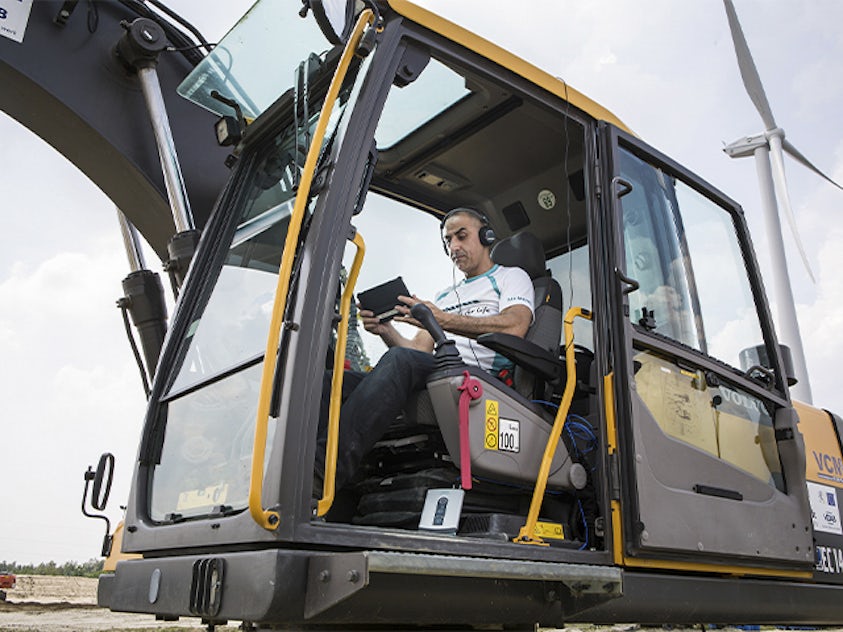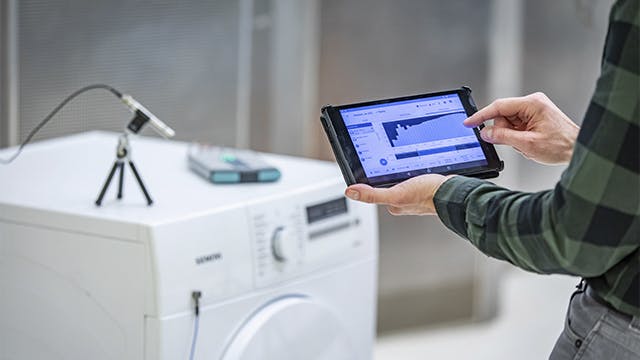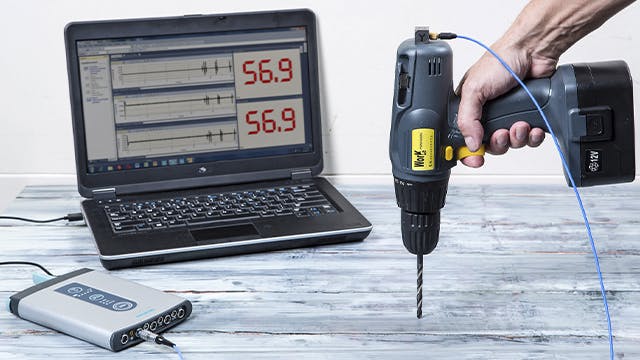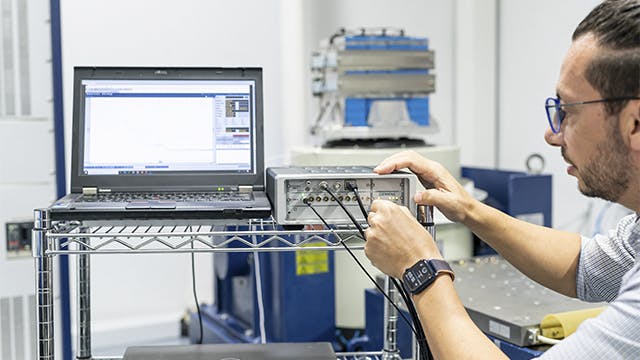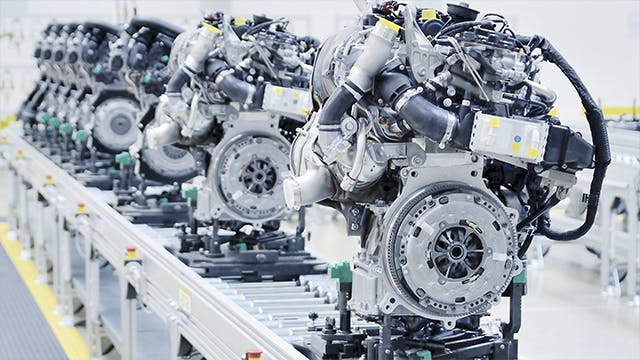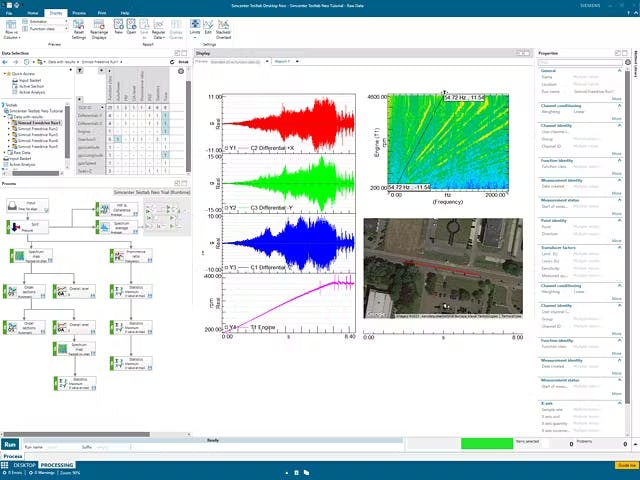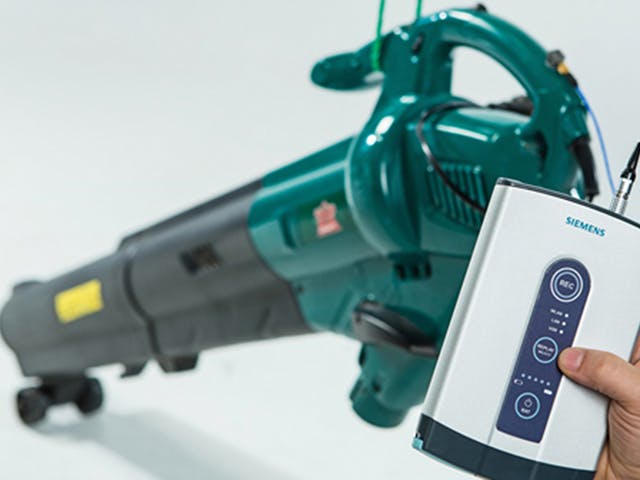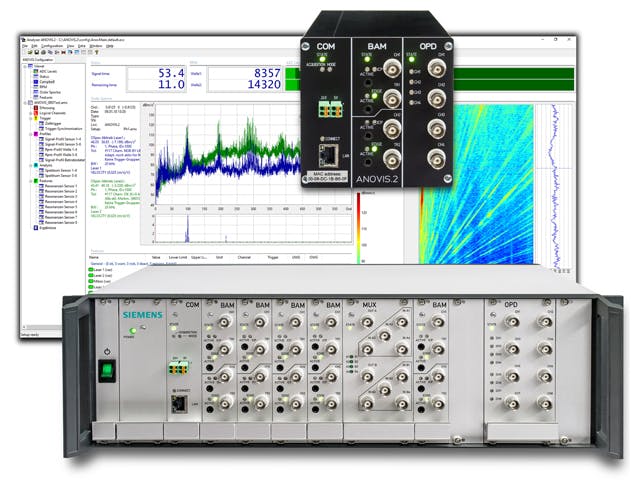Zvuk a vibrace ovlivňují každého z nás v našem každodenním životě – od chytrých telefonů, které používáme, přes auta, která řídíme, a stroje, které obsluhujeme, až po prostředí, ve kterém všichni žijeme. U mnoha výrobků se legislativa vztahuje na maximální úrovně vibrací nebo akustiky. Dobře vyvážený zvukový a vibrační výkon je však uživateli vnímán také jako známka vysoké kvality, přesnosti, pohodlí, sportovnosti nebo jiných důležitých vlastností produktu.
Testování hluku a vibrací je proces měření, analýzy nebo ověřování dynamických charakteristik systému a jeho součástí, následné vytváření a ověřování řešení pro úpravu těchto charakteristik tak, aby splňovaly cíle návrhu.
Způsob, jakým je hluk a vibrace vnímán lidmi nebo měřen senzory, je kombinací dynamických zdrojů v systému a mnoha přenosových cest v konstrukci, kterými je energie přenášena. Testování hluku a vibrací pomáhá oddělit dynamiku související s provozními zdroji od dynamických vlastností konstrukce a umožňuje inženýrům identifikovat hlavní příčiny a cílená řešení pro zlepšení výkonu.
Související produkty: Simcenter Testlab Neo | Simcenter SCADAS | Simcenter Testxpress | Simcenter Anovis | Zvuková kamera Simcenter | Simcenter Qsources
